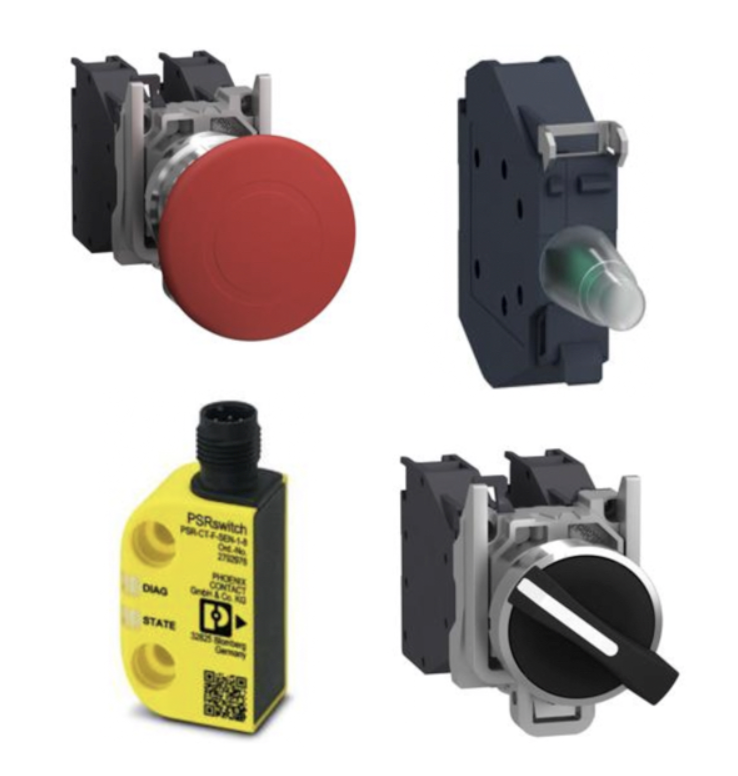Safety Switches

Disconnection of electrical power and protection of personnel during service, maintenance, or emergency conditions are the critical functions of safety switches. These devices perform as reliably during isolation as do the circuit breakers that are commonly used to re-energize equipment after work is completed. And like breakers, safety switches are installed at or near the electrical equipment they control. They are found in both commercial and industrial applications, often near the access gates, safety doors, or machinery where the risk of electrical shock, arc flash, or mechanical injury is a present danger.
Heavy-duty safety switches are specifically designed for the harsh environments found in industrial applications, coupled with their robust use—such as when they’re installed on large machines to control their power. Practical durability was the guiding principle behind their design, and that has paid off: they are default products in situations where switches have to withstand the effects of dust, moisture, or vibration. Reinforced enclosures, corrosion resistance, and serious compatibility with a wide range of system voltages—it’s all there. But it’s also straightforward to use: easy installation, safe operation, and long life. And, when you consider how the safety of industrial personnel is at stake, that last point is especially important. You don’t want safety switches that operate just occasionally but rather those that ensure uninterrupted service. And the best part? Most heavy-duty safety switches deliver it all at a cost that’s easy to manage.
More Information about Safety Switches
The selection of safety switches provides for general and heavy duty applications. General duty switches are designed to handle up to 600 volts and 30 amps. Heavy duty switches can handle up to 600 volts and 60 amps. If your application requires more than that, you’d have to look for something not called a safety switch, like a contactor. Safety switches are also available with added protection features, like fuses and circuit monitoring functions, that can trip a circuit under fault conditions. To top it off, even what’s not strictly a safety feature can be considered a safety feature, since good accessibility makes it more likely that an operator inconvenienced by a machine control or power switch will use it instead of the machine itself.
FAQs
Do different types RFID safety switches protect and save lives during a short circuit event?
RFID safety switches are designed to monitor access and ensure safe machine shutdowns but do not directly protect or save lives during a short circuit event, which is typically handled by circuit breakers or fuses.
E-Stop Categories
E-Stop buttons provide the ability to cut power to potentially dangerous hardware in case of an emergency. This stop function should occur without causing any additional unsafe conditions. E-Stop circuits are typically used with safety-rated hardware, such as safety relays.
There are different E-Stop categories that determine how machinery will behave once the stop is actuated
Stop category 0 function
Stop category 0 function works by immediately killing power to the hardware connected to it. This is the fastest and safest way to provide a stop function for an E-Stop safety circuit. It should be noted that additional electrical or mechanical action may still occur to more quickly provide a safe environment, such as braking.
Stop category 1 function
Stop category 1 function does not immediately shutoff power, but provides a delay before mechanical disconnect. This function is common when it is necessary for a certain process to finish a movement or cycle, or to wind down before it is safe to shutoff power. This category is also used when cutting power immediately can create a dangerous environment for the operators in the area of the equipment. By allowing for a delay to occur, it provides time for machinery to safely shut down.

